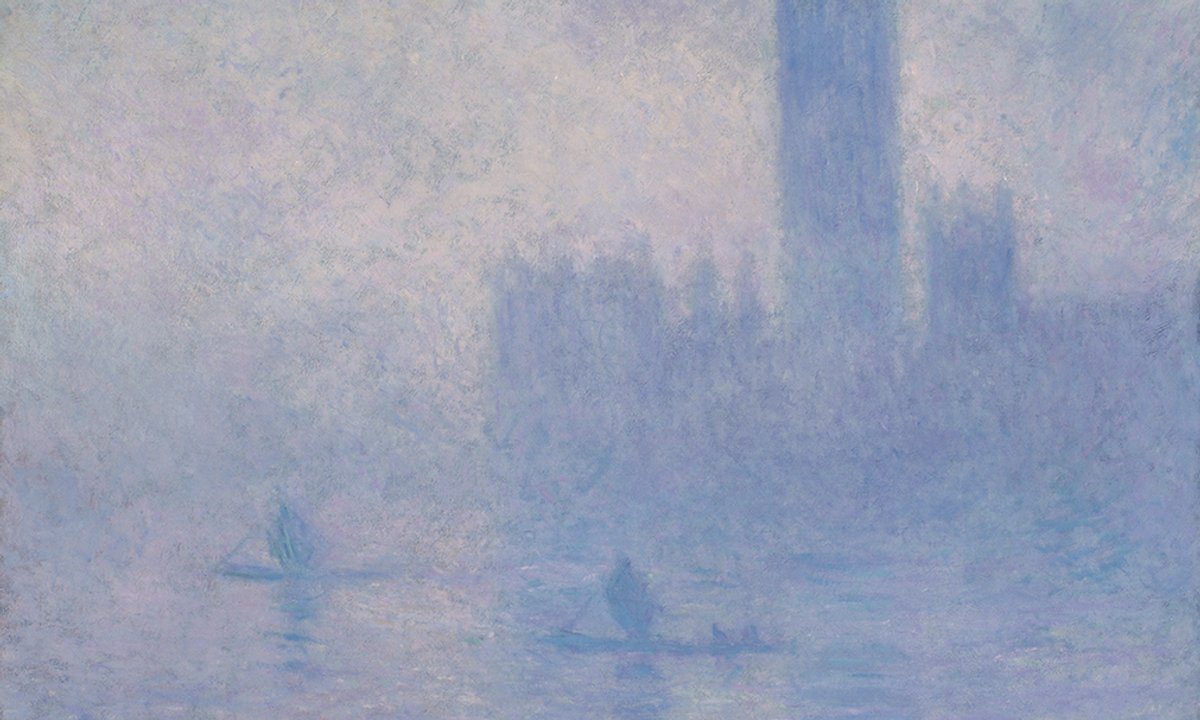The Courtauld Gallery’s exhibition Monet and London: Views of the Thames will be the first time an important group of Claude Monet’s London paintings has ever been shown in the city together. Monet (1840-1926) had planned an exhibition for 1905 but, having sold 24 of the works at their acclaimed Paris outing in 1904, he found himself unable to borrow back enough for the London show. Dissatisfied with the Thames canvases he had left over, the notorious perfectionist postponed his London show to work on them some more. In the end, the exhibition never happened.
The ambition is to recreate the visitor experience that Monet planned
“The ambition of this show is to recreate the visitor experience that Monet planned,” says Karen Serres, the curator of the Courtauld exhibition. She has done what Monet could not and secured the loans of 18 of the canvases originally exhibited in Paris, plus an additional three from public collections in the UK and Switzerland. The exhibition is as close to the fulfilment of Monet’s 120-year-old wish as is likely to happen.
The show will give UK audiences the chance to assess Monet’s relationship with London. The artist was in awe of the light effects of the capital’s infamous fog, which he had first seen in 1870 while dodging conscription into the French army. Made in the course of three subsequent visits between 1899 and 1901, Monet’s careful studies merged sky, river and architecture into a single, amorphous field. According to Serres, this work paved the way for the celebrated innovations of Monet’s late water lily paintings, cementing his reputation as France’s greatest living artist.
Smoke on the water: Waterloo Bridge, Gray Weather (1900) is coming on loan from Chicago
Art Institute of Chicago/Art Resource, NY/Scala, Florence
It was not only London’s weather that inspired Monet. By depicting the city’s riverside, he was measuring himself against other notable painters of the Thames, such as James McNeill Whistler and, above all, J.M.W. Turner. “It’s kind of strange because he denied it,” Serres says, “maybe to try to make his project seem more original, but there’s no question that Turner had a big impact on his work.”
Distinctly Anglophile, Monet also admired London for its modernity. Pursuing his customary method of working in series, he painted only three subjects while in the city, all along the Thames: the smoking chimneys of the South Bank; Charing Cross Bridge, smoke billowing from its rail traffic; and the Houses of Parliament. For Monet, these structures were extraordinary novelties that pointed to the future, and he painted them, through the mist and fog, as he saw them.
Visitors to the Courtauld will be in a privileged position to evaluate the accuracy of Monet’s perceptions of the city, as many of the paintings were begun a mere 300m away, in a makeshift studio at the Savoy Hotel, or just over the river by St Thomas’ Hospital. Coinciding with the 150th anniversary of the first Impressionist exhibition in Paris, Monet and London will be a rare opportunity to appreciate the importance of London for the principal artist of the French movement.
• Monet and London. Views of the Thames, Courtauld Gallery, London, 27 September-19 January 2025
